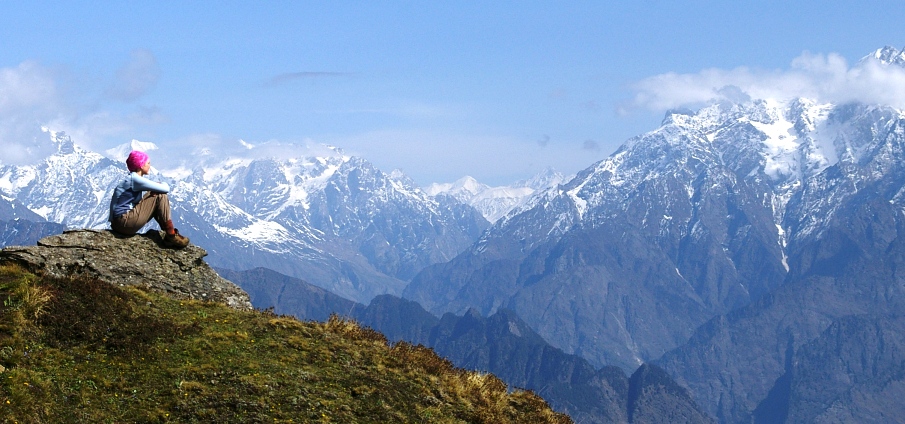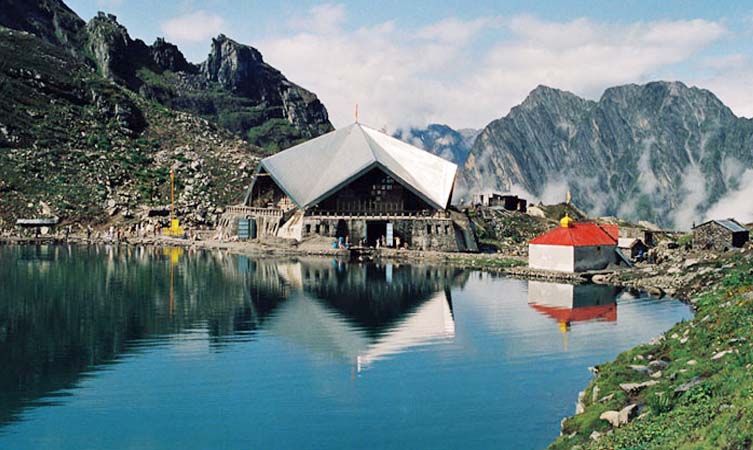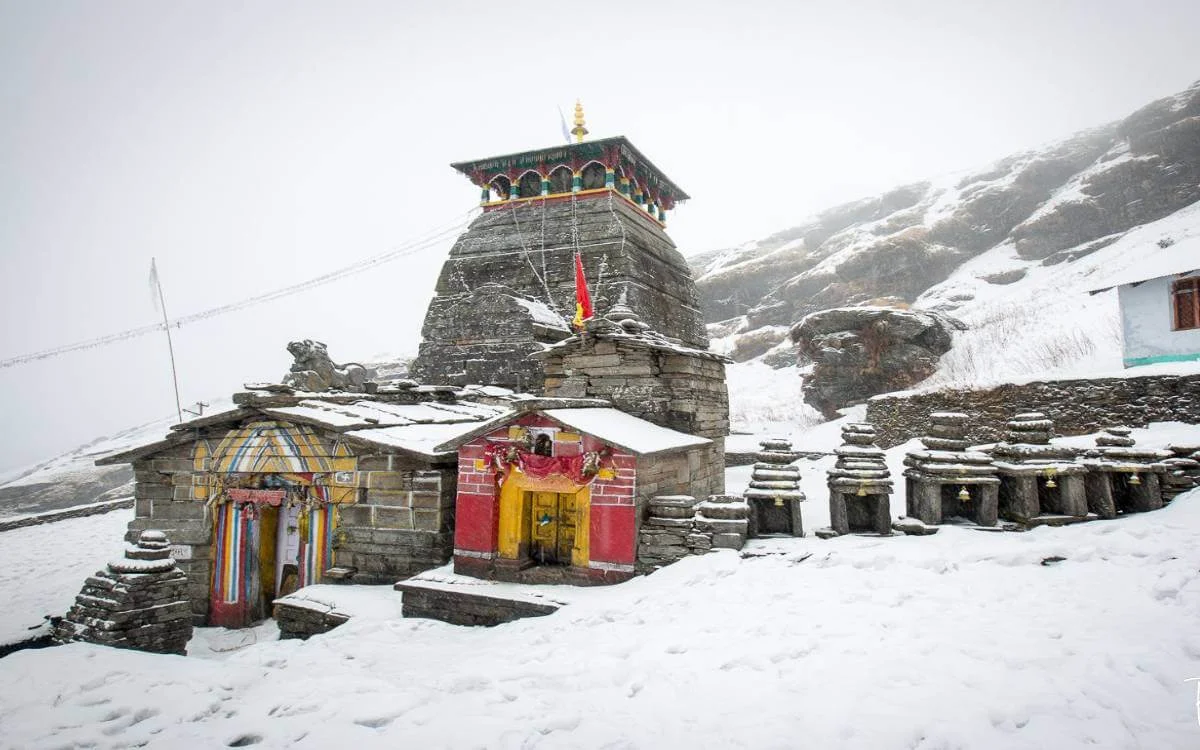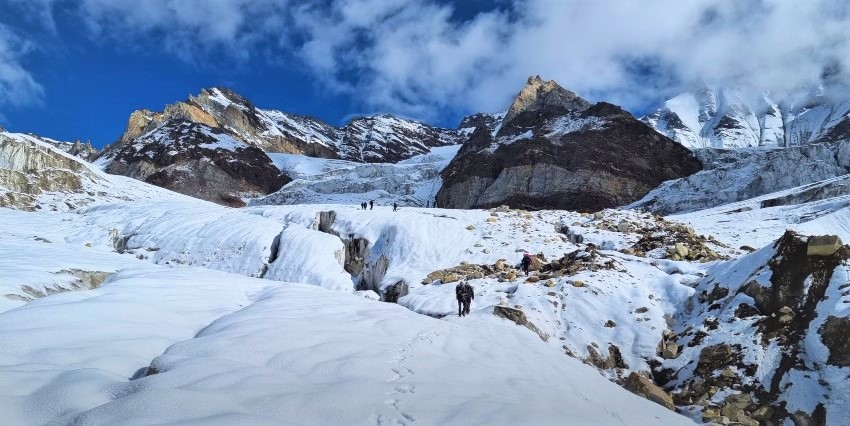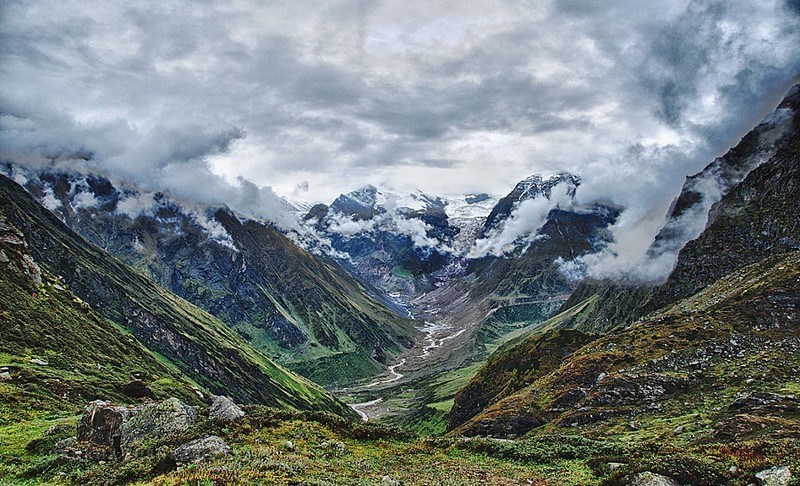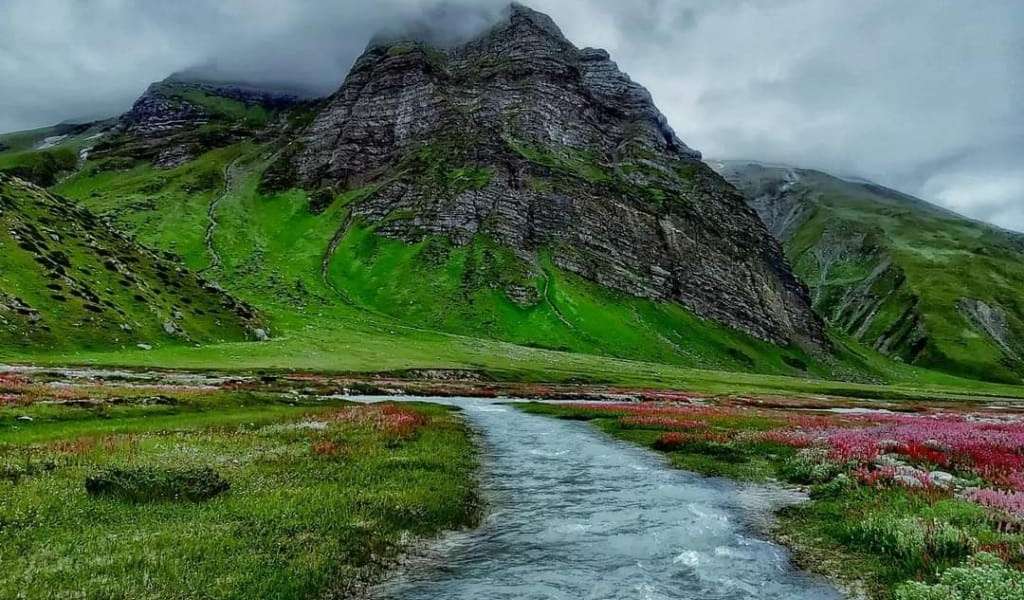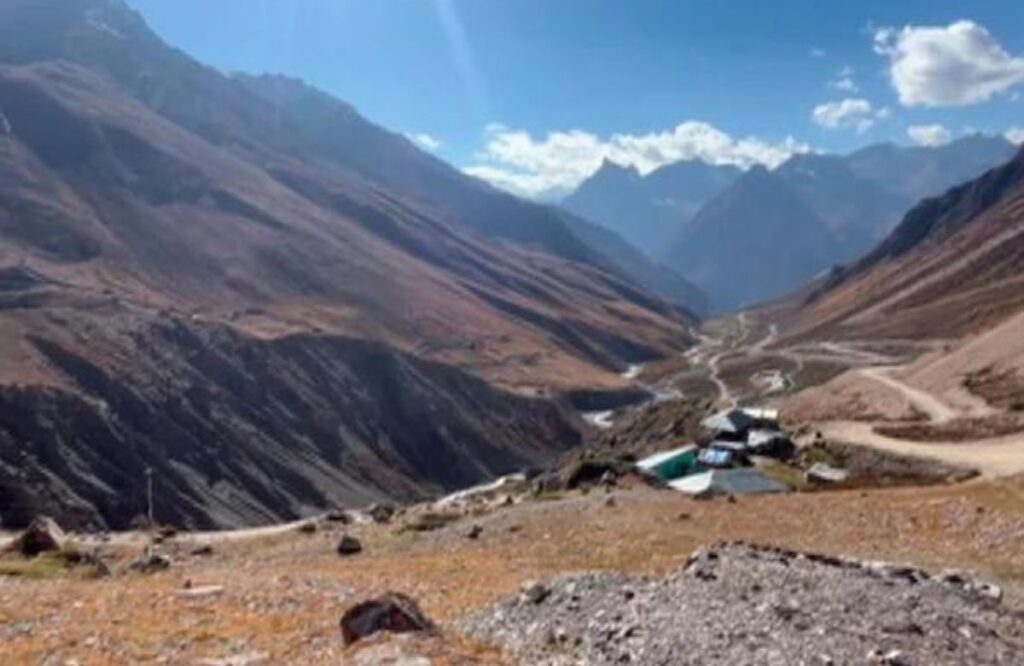Kuari Pass doesn’t shout. It waits at about 12,500 feet, tucked in the Garhwal Himalayas, its face turned to giants like नंदा देवी (Nanda Devi), चौखम्बा (Chaukhamba), द्रोणगिरि (Dronagiri), and कामेत (Kamet). You don’t just walk it. You grow into it, step by step, सांस दर सांस, breath by cold breath.
First Glimpses
The journey begins in जोशीमठ (Joshimath) or sometimes पिपलकोटी (Pipalkoti), after a long, winding drive. नदियाँ stay close, पर्वत watch without a word. At Gulling, after the first steep climb, the हवा thins and opens. You pass through ओक (oak) and बुरांश (rhododendron), and then suddenly, everything clears.
At Gulling Top, the view takes hold. नंदा देवी rises, sharp and startling. For a moment, you forget to move. The आकाश feels low, as if you could reach up and place your hand against it.
Nights That Stay With You
Camps are simple, just तंबू (tents) on forest edges or open ridges. Night falls fast. The sky spills तारे in numbers you cannot count. शांति becomes a sound of its own. You notice the sharp smell of देवदार (deodar), the bite of ठंडी हवा in your throat, the kind of stillness that city walls never allow.
Morning is another kind of shock. The peaks burn सुनहरी (gold) when light strikes, and you stand there, cup of चाय in hand, watching mountains wake as if for the first time. Words shrink in the face of that.
The Pass and the Reward
On summit day, the हवा feels tighter. The climb is steady, the trail crunches under boot. Then the ridge opens. Suddenly, the horizon is a sweep of शिखर (summits). They stand motionless, giants in a circle, holding you in the middle.
You don’t need to talk. The silence between trekkers says everything. साँसें hang in the cold, hearts quicken, eyes scan a sky too wide to take in. Someone whispers “जय भोलेनाथ,” and the sound feels small but steady under that vastness.
Snow and Seasons
सर्दी lays snow thick along the path. जनवरी and फ़रवरी usually cover the meadows in सफ़ेद. Each step then feels heavier, but each view brighter. By मार्च, बुरांश starts showing its pink and red blossoms, a reminder that वसंत is pressing close.
गर्मी softens the trail, घास के मैदान open and green. शरद (autumn) makes the skies साफ़ and the views endless. Every season gives the pass a new मूड, but all hold the same खिंचाव, the same pull.
Notes for the Walk
The trail stretches about तीस से तैंतीस किलोमीटर over five to six days. Forests first, then बुग्याल (meadows), then the open ridge at Kuari Pass.
Best months are अप्रैल to जून, and सितम्बर to नवम्बर. Winter, from late दिसम्बर into फ़रवरी, brings बर्फ़ and solitude.
Nights can freeze you through. अच्छे कपड़े matter most. Thermals, fleece, down jacket, gloves, पक्के जूते. Without them, नींद turns restless.
Campsites like खल्लारा (Khullara) test patience with ठंड but reward you with skies unlike anywhere else.
What You Carry Back
Not photographs alone. You carry the weight of your own सांस at altitude, rough and shallow. The sting of ठंडी हवा when it hits your lungs too fast. The steam of चाय is cooling in a tin cup. The soft crunch of बर्फ़ underfoot.
Mostly, you carry the memory of मौन. That wide, clear silence that makes you realize scale. पहाड़ don’t move for you. They don’t need to. You stand छोटा but जागा in their presence.
Kuari Pass doesn’t hand out trophies. It teaches stillness. It shows what happens when the land opens wide and you stop trying to fill it with words.
Walking down, you notice how every step back to the valley feels lighter yet heavier. Lighter because the climb is behind you. Heavier because a part of you wants to stay. In the villages below, a बच्चा runs after your group, calling out for toffee. An old shepherd nods, says slowly, “यहाँ पहाड़ सब सिखा देते हैं.” The mountains teach everything.
And maybe that is the truth of Kuari Pass. It isn’t about reaching a height on a map. It is about being stripped of noise until you hear yourself again, as clear as the peaks, as steady as the cold.

